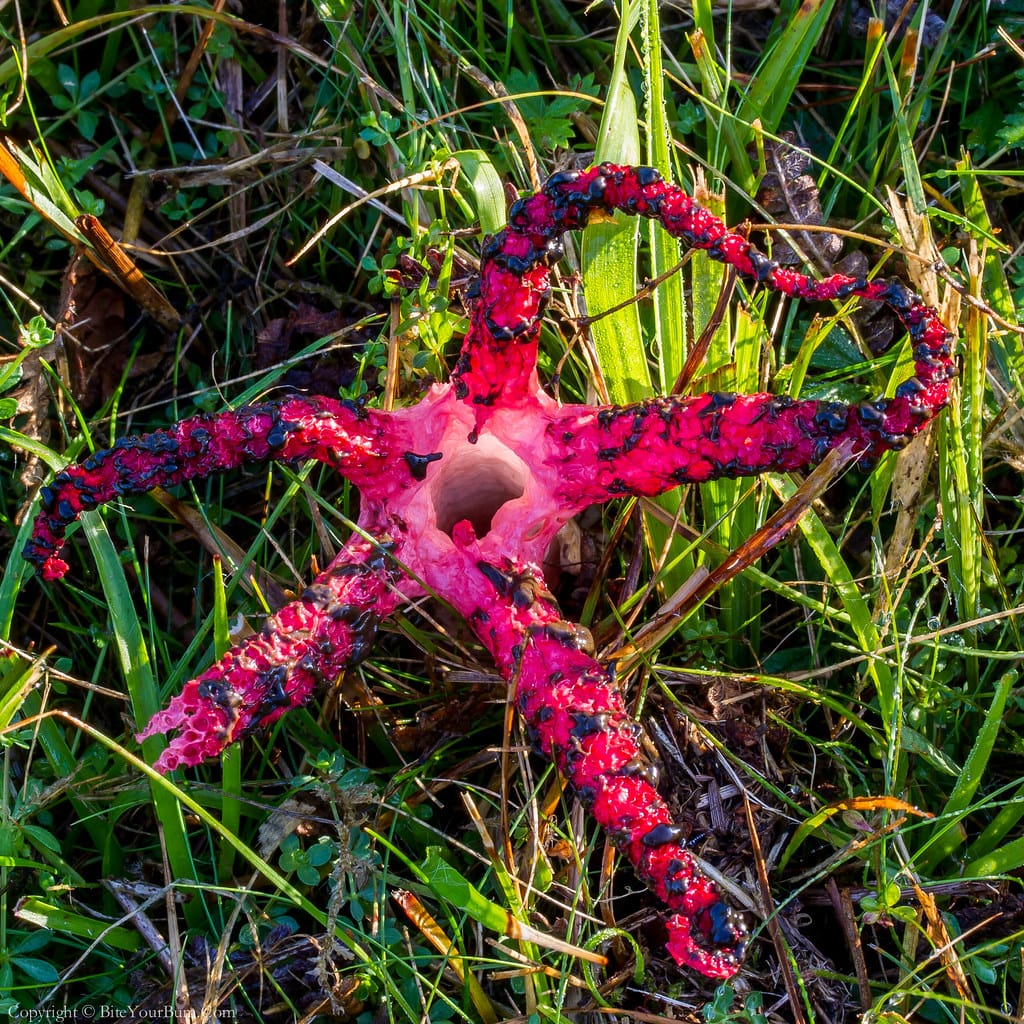Prepare to be captivated by Clathrus archeri, a fungus known colloquially as Devil’s Fingers. This otherworldly organism, with its startling appearance and captivating life cycle, has garnered both curiosity and repulsion. Join us as we journey into the fascinating world of Clathrus archeri, exploring its unique characteristics, ecological significance, and the intriguing ways it interacts with both humans and the environment.
From Egg to “Octopus”: A Visual Journey
Clathrus archeri, commonly known as Devil’s Fingers or Octopus Stinkhorn, is a fungus that truly lives up to its name. Its life cycle reads like something out of a science fiction novel, beginning with an unassuming white, egg-like structure. As the fungus matures, this “egg” undergoes a dramatic transformation, bursting open to reveal four to eight bright red, tentacle-like arms. These arms, often reaching up to 10 cm in length, are coated in a sticky, foul-smelling substance called gleba, which plays a crucial role in the fungus’s unusual life cycle.
A Symphony of Scents: Why So Smelly?
The pungent aroma of Clathrus archeri, often likened to rotting flesh or sewage, is not a mistake of nature; it’s a brilliant evolutionary strategy. This putrid perfume serves a vital purpose: attracting insects. Flies and beetles, drawn to the smell of decay, unwittingly become the fungus’s primary mode of transportation. As these insects crawl across the gleba-covered arms, they pick up microscopic spores, dispersing them to new locations and ensuring the survival of the Devil’s Fingers fungus.
A Global Invader: Distribution and Habitat
Originally found in Australia, New Zealand, and possibly parts of southern Africa, Clathrus archeri has become a global citizen. It can now be found on multiple continents, a testament to its resilience and adaptability. The fungus thrives in areas rich in decaying organic matter, making forests, gardens, and even mulch piles prime real estate for Devil’s Fingers.
Nature’s Recycler: Ecology and Growth
While its appearance and aroma might suggest otherwise, Clathrus archeri plays a crucial role in maintaining a healthy ecosystem. As a saprotrophic fungus, it obtains nutrients by decomposing dead organic matter, such as fallen leaves and wood. This process of decomposition is essential for recycling nutrients back into the soil, making them available for other organisms.
Untapped Potential: Research and Applications
Scientists are increasingly intrigued by Clathrus archeri and its potential applications. Some researchers believe that the fungus might possess medicinal properties, such as antimicrobial compounds. Others are exploring its potential for bioremediation—using its appetite for decay to break down specific waste materials.
Look, Don’t Touch: Interacting with Devil’s Fingers
While Clathrus archeri is not considered toxic to humans, it’s best admired from a safe distance. Remember, its odor is designed to attract insects, not humans. Eating Devil’s Fingers is strongly discouraged, as it could lead to digestive upset.
If you encounter this fascinating fungus in the wild, take a moment to appreciate its unique beauty and ecological significance. Snap a photo if you like, but let this curious organism continue its vital work undisturbed.
Conclusion: Embracing the Bizarre
Clathrus archeri serves as a reminder that even the most bizarre and seemingly unpleasant creations of nature have a role to play in the intricate web of life. Its unique appearance, pungent odor, and global spread make it a captivating subject of study for scientists and nature enthusiasts alike. By understanding and appreciating organisms like Devil’s Fingers, we gain a deeper appreciation for the complexity and wonder of the natural world.
- Senior at What Age: Benefits & Eligibility Guide - March 29, 2025
- Unlocking Senior Benefits: How Old is a Senior? Your Complete Guide - March 29, 2025
- Master Russian Politeness:A Guide to Saying Please - March 29, 2025
















